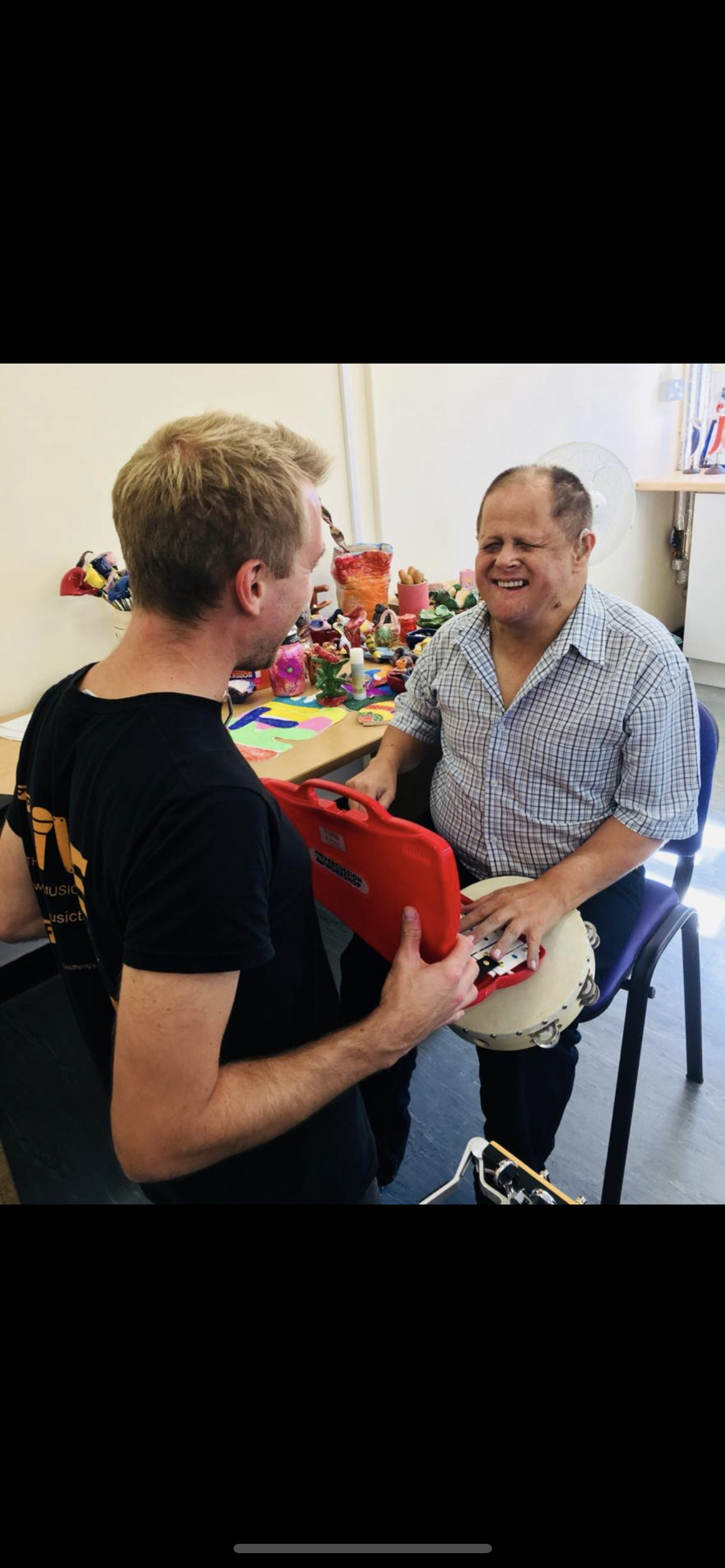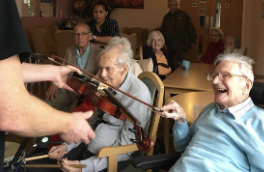Harmony in Healing: The Impact of Music Therapy

“An autistic boy we worked with would have his fingers in his ears the whole time,” says Marc Barnacle from TIME music therapy, “we tried a variety of instruments, and it didn’t work. Once he heard the violin, his fingers came out of ears. The moment the violin was gone, his fingers went back into his ears. He wouldn’t talk or engage with anyone.”
In an era where discussions around mental health are at the forefront, using music as a form of therapy is gaining recognition. This is supported by an increasing amount of research on how music can impact our wellbeing, this can be by engaging in activities such as: playing an instrument, listening to sounds and music or songwriting can effectively reduce anxiety levels, blood pressure, improve sleep quality, mood, and memory.
According to Great Ormand Street Hospital, between October 2019 and April 2020, they found that 96% of children who listened to music found it improved their mood, with 88% of children found that it allowed them to express their feelings. “After music today I feel relaxed, great and free” a patient had written down after a music therapy session.
Music and Mental Health:
Mental health issues are on the rise. In 2022, The Royal College of Psychiatrists’ research found that 43% of adults with mental illnesses said that their mental health got worse due to the long wait for treatment. People with mental illnesses, 23% have to wait more than 12 weeks to start treatment, some even going to A&E or dialling 999 out of desperation.
By 2024, the government have said that they plan on investing an additional £2.3bn annually into mental health services- allowing 2 million more people to receive the help they need.
So, if research has proven that music can temporarily uplift moods and reduce anxiety levels, could music therapy be used as a form of medicine?
‘Music medicine’ and ‘music therapy’ tend to be seen as different entities. While music therapy involves a trained expert to guide someone to play or compose music, music medicine is much easier to achieve, as you can listen to music whenever and however you want to.
When compiling a playlist as a form of music medicine, it can help to choose songs that reflect your current mood, then finishing your playlist with compositions that reflect the emotional state you would like to achieve.
If you are going through a breakup, for instance, you may be tempted to blast ‘I know It’s Over’ by The Smiths or ‘Lover, You Should’ve Come Over’ by Jeff Buckley through your headphones. However, it might be more helpful to play uplifting songs to express positivity alongside pain to remind you of the happier times in your life. This way, it may help you to not spiral into a negative rumination.
“I think that using music as a form of therapy can definitely help,” says East London musician Arun Moorthy, “I know that it can help people with mentally degenerative disorders like Alzheimer's and dementia, but can also improve people’s mood.”

Aspiring musician and music performance student Aarun Moorthy, 19, has been engrossed in music for 8 years. From learning how to play piano at age 11, to learning electric guitar and bass during his mid- teens, Moorthy’s passion for music only grew stronger. Taking inspiration from 90s/ 00s rock bands, Moorthy began his musical journey during his GCSE music studies and has created alternative rock music since.
“Music was like a therapeutic outlet for me,” the East London musician says, “ I liked making weird sounds on my instruments, doing covers and playing with other people. I just loved everything about music.”
Despite singing about “nothing” sometimes, Moorthy explains how songwriting can help him to say things that are challenging to voice onto paper.
“I find listening to music different to making music because you don’t have any feelings of self-conscious or self-reflection about listening to music in the same way about making music,” he explains,
https://vimeo.com/896337082?share=copy
The Science behind Music and the Impact it has on the Brain:
Music therapy taps into the fundamental elements of music- melody, rhythm and harmony- as therapeutic tools. Whether it is for people struggling with mental health, dementia, or physical disabilities- these elements are tailored to suit individual’s needs.
Melody has emotive qualities- it can evoke feelings and memories, while rhythm provides a structured framework for coordination and movement, as well as sequencing skills. Harmony contributes to an immersive sensory experience and chemically pleases the brain.
Astonishingly, music can have such a powerful impact on us. Like the chills that ripple through you and leave you with goosebumps when you hear a moving piece of music- that is most likely caused by dopamine. Dopamine is a neurotransmitter that triggers sensations of pleasure and motivation.
This phenomenon is not a recent revelation- over the past century, music has been used as a treatment programme. In the 1950s, French cellist Julliette Alvin founded the Society of Music Therapy and Remedial Music (later renamed the British Society for Music Therapy), and the wide use of music therapy has grown considerably since.
Since the “Mozart Effect” boomed in the 1990s, people have associated listening to classical music to an increase in intelligence. Whether the Mozart Effect is true is up for debate, but research shows that listening to classical music in particular can enhance memory retrieval. It is believed that listening to classical music can help fire off synapses (a gap at the end of a neuron that allows a signal to pass from one neuron to another) in the brain that can rejuvenate brain pathways that may have been dormant.
Whether it’s Sweet Caroline or We’ll Meet Again, music can benefit people suffering from Alzheimer's disease or Dementia by evoking memories and feelings that they may struggle to convey.
“In a care home when a resident starts to mimic playing a saxophone or piano, the staff would then speak to their children and did not know he used to play in a band. But because we played certain music, it sparks something” says Marc Barnacle from TIME Music Therapy.
“People that have real struggles in their life- not knowing what they’ve done that morning or last week, but can hear a certain song and they start talking to us about growing up in the East End, or when they met their wife in the 1950s- it’s amazing, all because they’ve heard a certain song.”
TIME Music Therapy:
Based in Essex, TIME (Together In Musical Expression) is a charity that uses music as a tool of self-expression to connect with the world.
“How often do you hear people say, ‘oh no I can't sing, I can't play guitar, I could never perform on stage,’” says one of the founders of TIME Marc Barnacle, “and particularly within disability sectors, there are not many opportunities. We just wanted to provide something and make sure it was accessible.”
By creating a fun, safe and sociable environment for clients, TIME offers a variety of different ways of using music as a form of therapy tailored to the individual.
“What we’d do in a care home would be different if we went to a home with young adults who are wheelchair bound or have no verbal communication,” explains Marc,

“if you just had one practise that you took to each domain, you would see a different level of effectiveness. Being able to adapt and adjusting it to each environment hopefully keeps how effective music and music therapy can be.”
According to TIME, music therapy can be beneficial in numerous ways- to use music as a creative outlet, to develop motor skills, confidence, communication skills and self-expression. The charity, specialising in the disability, mental health and dementia sectors, can support and teach clients to perform, experiment with vibrations and textures of various instruments, provide sensory and relaxation experiences and songwriting.
“We'll break song writing or music sessions into a simple form,” explains Marc, “so that no matter anyone’s input, how small it is, has got equal worth and value.”
